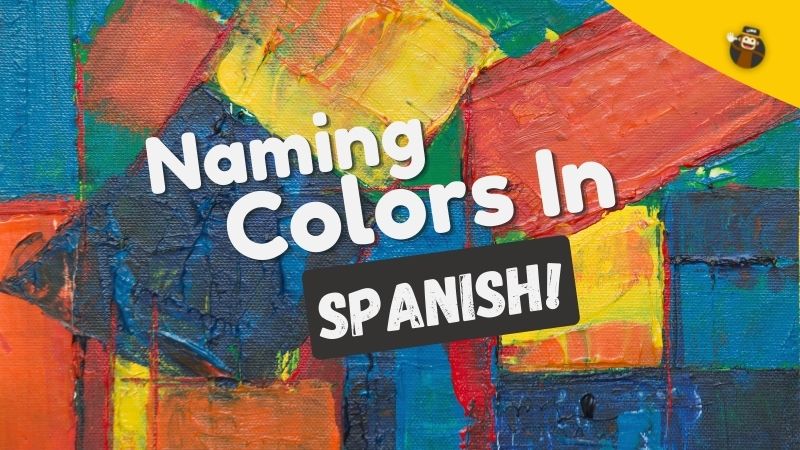Are you learning essential words in Spanish and would like to know about colors in Spanish? This guide will help you understand what each color is called and how to pronounce them correctly.
Imagine that you walk through the streets of a Spanish-speaking country and look at the sky, the clothes of the people, and other objects. Surely you will think about the color of those things in your native language. But what if you can say the colors in Spanish too? You would practically be entering a new world!
They say that speaking another language is like living a second life. Being able to tell the colors in Spanish is a precious feeling for someone who has a passion and desire to become fluent.
Speaking of which, the Ling app is currently the number 1 place on the internet to Learn Spanish!
Why Should You Learn Spanish Colors?
In addition to the statement above, colors are one of the main steps in language learning. When we have a strong foundation of knowledge about colors, we can use them in various situations in everyday life. Besides, we will recognize every hue and meaning.
When learning Spanish, it is essential to know the colors, just like any other word, to communicate correctly with the locals. A basic understanding of colors will help you describe everything that is around you.
This interesting article explains how people perceive colors differently depending on the country. According to that article, the Warlpiri people of Australia don’t have a term for “color,” they instead describe colors with a vast vocabulary of relevant words. In addition, some cultures have the same word for two colors, while in other parts of the world, those colors are different and have a proper name and meaning.
Fascinating, isn’t it?
For this reason, we have to learn the colors in all the languages that we begin to study; in this case, you have to know the colors in Spanish!
What Is The Spanish Word For Colors?
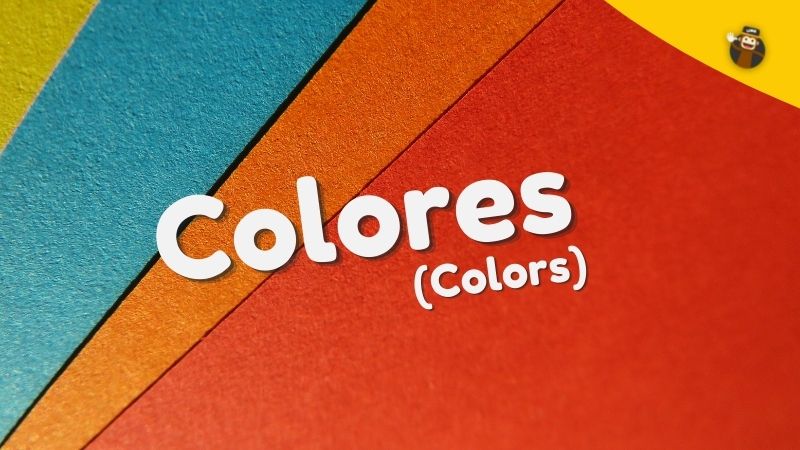
Thankfully, it is pretty similar to English, so you will learn it fast. The term for colors in Spanish is “colores.” It is the plural form. The singular form is “color,” written as in English but spoken with a different pronunciation.
Listen to the pronunciations below:
Colors In Spanish By Classification
This guide divides colors by classification to make them simple to follow. You will realize that the colors in Spanish are easy to learn, and some are even very similar to English. So sit back and enjoy reading this guide. At the end of the article, I’ll give you some examples using each color in a sentence.
¡Empecemos! (Let’s begin!)
Colores Primarios (Primary Colors)

Surely you know this term, and you already know what these colors are in your language, right? The primary colors are the basis for creating other colors and are the following:
Colores Secundarios (Secondary Colors)
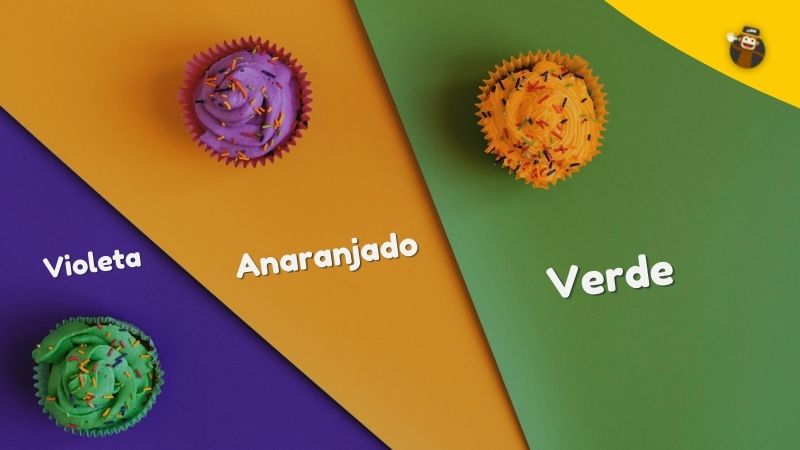
Those formed by combining 2 primary colors are the secondary colors.
- Morado (Purple)
Morado is a combination of “Azul” (blue) and “Rojo” (red). - Anaranjado(Orange)
Anaranjado is a combination of “Amarillo” (yellow) and “Rojo” (red) Note: In some countries, you may hear people saying “Naranja” instead of “anaranjado,” another name for this color. - Verde (green)
“Verde” is a combination of the colors “Amarillo” (yellow) and “Azul” (blue).
Colores Cálidos (Warm Colors)
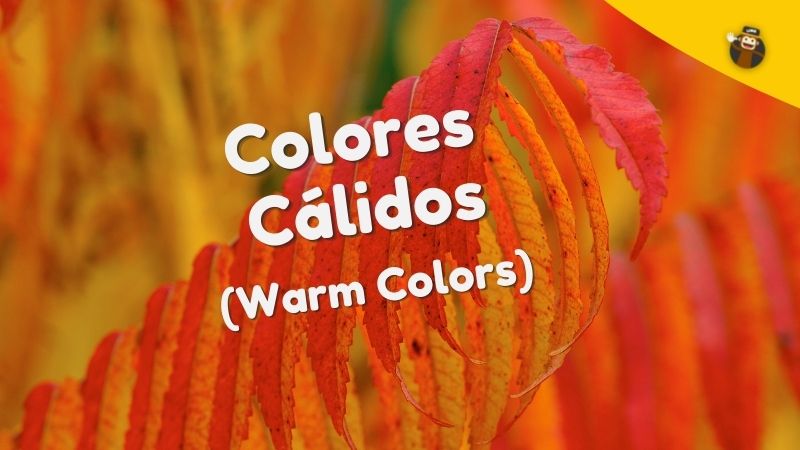
Colors that denote strength, happiness, warmth, or aggressiveness are considered warm colors in the color wheel. Among them, we find red, orange, and yellow that you learned before. Within this category, there is also another essential color that you should know:
Some variants of warm colors are:
- Amarillo-Naranja (Yellow-Orange): These are all the shades of yellow and orange mixed.
- Rojo-Naranja (Red-Orange): Like the one above, it is the gamut of all red and orange colors combined.
Colores Fíos (Cold Colors)
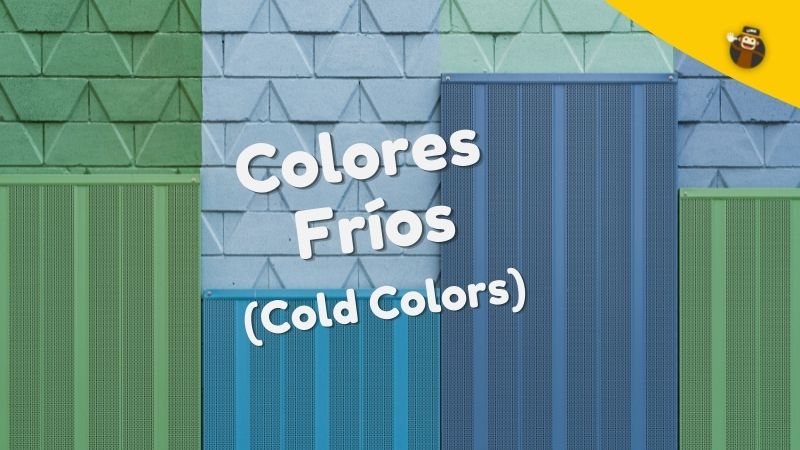
Contrary to warm colors, cold colors are associated with calm and a feeling of detachment. Generally, they are used alone to express relaxation or sadness. The entire range of blues and greens make up this color group.
In addition, in this category, another color that has not been taught yet in this article is violet.
Other Colors In Spanish
Now that you have learned the basic colors for everyday conversation, you can begin learning the rest of the colors that will allow you to describe things in the Spanish language.
Objects And The Color They Are Associated With
Now that you have learned about most colors, yes, even those that are not that common, you are ready to start describing objects with their respective colors. So here is a list with enough examples to give you ideas.

As a short exercise, get some paper and a pen and start looking at the objects in the place you are now. Write down the Spanish colors of the things you see. Use the main colors first until you memorize them.
If you already have the vocabulary for enough objects, good job! If not, you can always practice more Spanish vocabulary with Ling App.
Masculine And Feminine Form In Colors
Gender in Spanish is a complicated topic that requires a whole article to explain. So, this will be a short explanation of how to use colors in sentences considering the gender of the objects.
Depending on the noun that the color describes, colors can be singular masculine, singular feminine, plural masculine, or plural feminine.
In English, we use ‘the’ to refer to any object, but in Spanish, we have ‘la/las,’ the feminine form, and ‘lo/los,’ the masculine form. If it ends in ‘a’ we know is feminine, while it is masculine if it ends in ‘o’. In addition, if you add an ‘s,’ it denotes plural.
Now let’s see how that works with the colors. Take a look at the following examples:
Singular masculine form:
- El (the/singular masculine) libro (book) red (rojo)
Plural masculine form:
Los libros rojos (The red books)
- Los (the/plural masculine) libros (books) rojos (red)
Notice how the word ‘rojo’ becomes plural when adding the ending ‘os.’
Singular feminine form:
La casa es rosada (The house is pink)
- La (the/singular feminine) casa (house) es (is) rosada (pink)
Plural feminine form:
Las casas son rosadas (The houses are pink)
- Las (the/plural feminine) casas (houses) son (are) rosadas (pink)
Same as in the previous example, we add ‘as’ to denote plural.
If that is still confusing, think of it this way: ‘las casas’ are feminine, so they can’t be described as ‘rosados.’
However, ‘los flamingos‘ (the flamingos) can be described as ‘rosados’, and not ‘rosadas.’
Grasping this part may take time for a beginner. But you are on the right path! Let’s see some practical examples.
7 Example Sentences About Colors In Spanish
- “Mi gato es de color amarillo con café/marrón”. (My cat is yellow and brown)
- “En otoño las hojas de los árboles se vuelven rojas y anaranjadas”. (In autumn, the tree’s leaves become red and orange)
- “¿Cuál camiseta prefieres? ¿La lila o la turquesa?” (Which shirt do you prefer? The lilac or the turquoise?)
- “¡Tu auto plateado es hermoso!” (Your silver car is beautiful!)
- “El cielo se vuelve carmesí en la puesta de sol” (The sky turns crimson at sunset)
- De qué color es tu habitación? (What is the color of your bedroom?)
- Tengo el cabello rojo (I have red hair)
If you have enough basic vocabulary to play with, try making sentences too!
Some Advice To Learn The Colors Fast
Read many books, especially children’s books in Spanish, to grasp all the basic vocabulary about colors. Then, when you feel more confident and have memorized many colors, start describing the colors of every single object that you see around you. You can also write it down, as I advised before. It will help you associate colors with real things, allowing you to memorize faster.
If it becomes too difficult, start using memory cards with objects and colors with the translation to your native language. After that, you will be ready to start practicing with native Spanish speakers! Remember that practice is key.
Good luck!
Learn More Spanish Words With Ling App!
Would you like to learn more about colors and how to use them in sentences? Start learning Spanish vocabulary and grammar with the Ling App! Learning a new language is more joyful than ever with the fun and engaging quizzes and lessons. You will learn and retain helpful vocabulary for daily life conversations in your memory.
If you enjoyed this blog and want more Spanish content, let us know. For now, I’d recommend reading these 2 blogs: Happy Birthday in Spanish and South American Food.
Master Spanish by practicing at least 10 minutes every day. With Ling App, you can learn new words, grammar, and pronunciations, anywhere and anytime!

